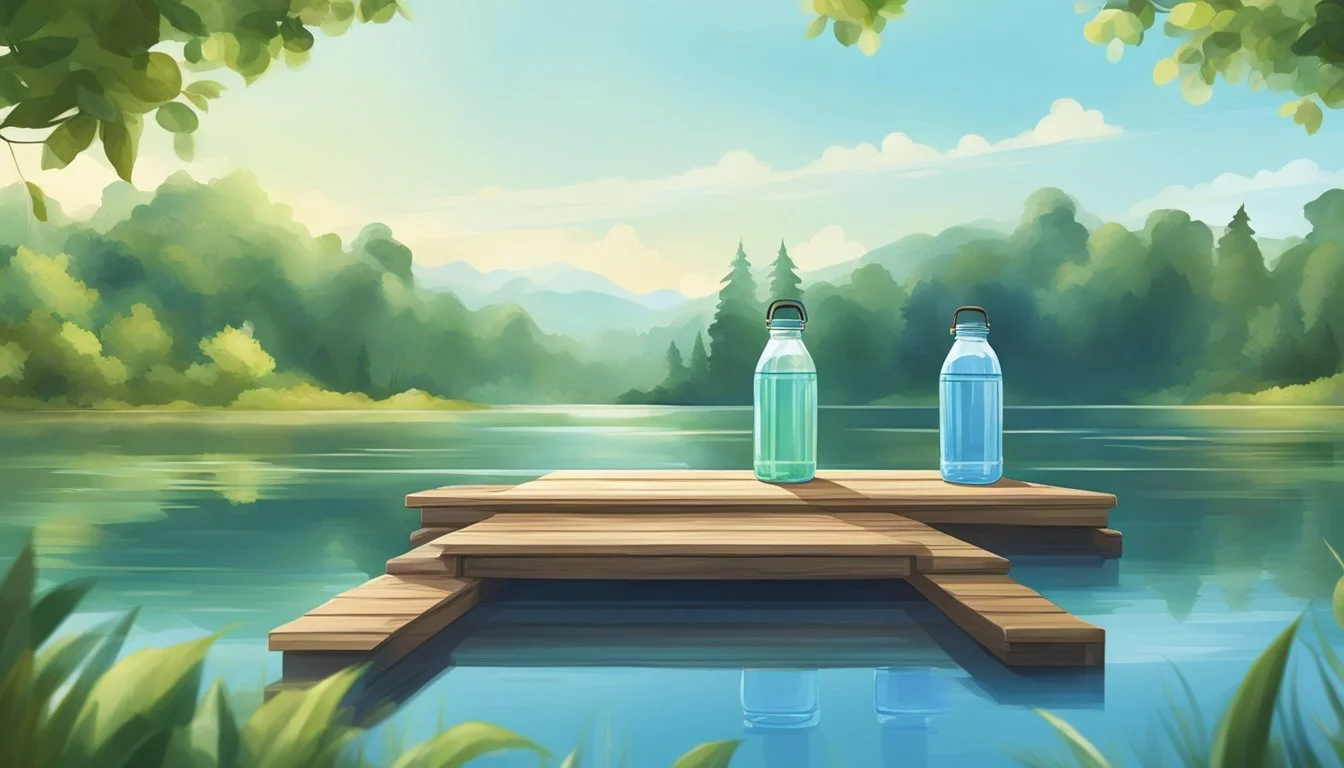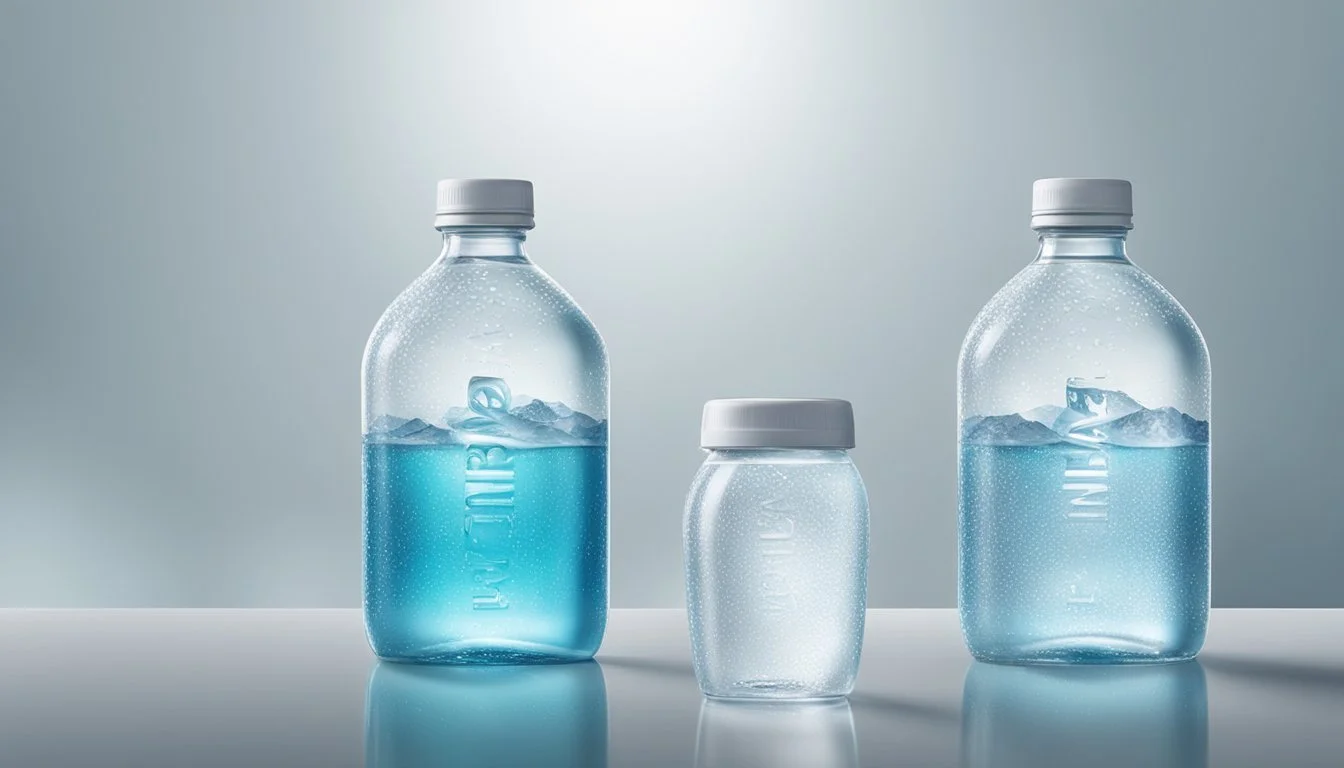Aqua Carpatica vs. Crystal Lake
Ultimate Bottled Water Comparison
When it comes to choosing the best bottled water, consumers often find themselves comparing popular brands. Aqua Carpatica and Crystal Lake are two names that frequently come up in these debates. Aqua Carpatica, known for its pure taste and high-quality standards, has gained popularity for its nitrate-free benefits and refreshing flavo
Crystal Lake, on the other hand, is recognized for its widespread availability and budget-friendly pricing. While it offers a clean and crisp taste, it may not have the same premium feel as Aqua Carpatica. Consumers looking for both quality and affordability often find themselves torn between these options.
For those prioritizing purity and health benefits, Aqua Carpatica emerges as the superior choice. This comparison will dive into the specifics of why one might prefer Aqua Carpatica over Crystal Lake, taking into account factors like taste, price, and overall quality.
Background of Bottled Water
Bottled water has become a staple in many households. It offers convenience and often presents a perception of purity and health benefits.
The market for bottled water comprises various types, including spring water, mineral water, and purified water. Each type sources its water differently, contributing to distinct taste profiles.
Spring water is collected from natural springs and typically contains minerals found in the underground sources. Mineral water, likewise, is rich in naturally occurring minerals but is regulated to ensure a specific mineral content.
The bottled water industry has grown significantly, with brands competing on purity, taste, and health benefits. Companies often highlight low sodium levels, lack of nitrates, and the presence of beneficial minerals to attract consumers.
Despite the benefits, some concerns surround bottled water. These include environmental impacts, such as plastic waste, and the use of artificial additives in some brands.
Bottled water brands also vary in how they manage their sources and ingredients. For example, while some brands emphasize the natural purity of their water, others might add minerals or use purification processes.
The industry continues to expand, with new entrants and innovations aiming to improve both the quality and environmental footprint of bottled water.
Profiling Aqua Carpatica
Aqua Carpatica offers a unique combination of purity, mineral content, and health benefits. Sourced from Romania's Carpathian Mountains, it is both naturally nitrate-free and low in sodium.
Origin and Source
Aqua Carpatica originates from the untouched Carpathian Mountains in Romania. The water comes from protected springs located in this pristine region, ensuring its high quality and natural purity.
These springs are geologically protected, enhancing the natural filtration process.
The water's journey through these ancient formations contributes to its clean and crisp taste. Romania’s commitment to preserving these natural resources guarantees that Aqua Carpatica remains a premier choice for bottled water enthusiasts.
Mineral Content
Aqua Carpatica is notable for its balanced mineral composition. It contains naturally occurring minerals that contribute to its refreshing taste and potential health benefits.
Here is a breakdown of its key mineral content per 100 ml serving:
Calcium: Essential for bone health
Magnesium: Supports muscle and nerve function
Potassium: Helps maintain normal blood pressure
Low Sodium Level: Beneficial for those monitoring their sodium intake
Additionally, Aqua Carpatica is naturally nitrate-free, making it a healthier option compared to many other bottled waters.
Health Benefits
Aqua Carpatica stands out for its health benefits, primarily due to its unique mineral content and purity.
The low sodium level is advantageous for individuals on low-sodium diets. The presence of essential minerals like calcium and magnesium contributes to maintaining strong bones and overall physical well-being.
Being naturally nitrate-free, it is safer for consumption, especially for pregnant women and infants. This attribute, combined with its mineral balance, makes Aqua Carpatica a superior choice for those prioritizing health and wellness in their hydration choices.
Profiling Crystal Lake
Crystal Lake offers a premium bottled water experience known for its purity and health benefits. This section delves into the product range, purity standards, and company ethos.
Product Range
Crystal Lake provides a diverse array of bottled water options catering to various consumer preferences. They offer spring water, sparkling water, and flavored water.
Each product comes in multiple sizes, from small personal bottles to large family-sized containers. This flexibility allows users to choose the right quantity for any occasion, be it a quick refreshment or a family gathering.
Their sparkling water options are particularly popular, appreciated for their crisp, refreshing taste.
Purity and Quality
Crystal Lake is synonymous with exceptional purity. The water is sourced from pristine springs that are regularly tested to ensure high-quality standards. Reviewers and consumers often highlight its clean, natural taste and lack of artificial additives.
The company employs advanced purification processes, including filtration and ozonation, to remove any impurities while preserving essential minerals. Crystal Lake's commitment to purity also extends to its packaging, which uses BPA-free plastic and recycled materials to minimize environmental impact.
Company Ethos
Crystal Lake prioritizes sustainability and community engagement. The company actively works to reduce its environmental footprint by using recycled packaging and promoting water conservation efforts.
They also support local communities through various initiatives, such as providing safe drinking water to underserved areas. Transparency is a key part of their ethos, as they openly share water source information and testing results with the public.
Their commitment to quality and sustainability has earned them a loyal customer base, making Crystal Lake a trusted name in the bottled water industry.
Comparative Analysis
Aqua Carpatica and Crystal Lake offer unique characteristics in their pH levels, mineral content, taste profiles, and pricing.
pH Level and Alkalinity
Aqua Carpatica boasts a naturally alkaline pH level of 7.8, making it beneficial for those looking to balance their body's pH. Its alkalinity helps neutralize acidity in the body. On the other hand, Crystal Lake has a slightly lower, but still alkaline, pH level of 7.2. While both waters are alkaline, Aqua Carpatica’s higher pH may be more desirable for those focusing on alkalinity.
Mineral Comparison
Aqua Carpatica is known for its low nitrate content, which is often a selling point. It contains essential minerals like calcium and magnesium that support overall health. Crystal Lake also contains these minerals but in slightly different proportions. Aqua Carpatica’s unique selling point is its nitrate-free attribute, which is rare in bottled waters and might appeal to health-conscious consumers.
Taste and Aftertaste
Consumers often describe Aqua Carpatica as having a fresh, pure taste with no aftertaste, thanks to its high-quality natural source and low nitrate content. Crystal Lake, while also praised for its clean taste, sometimes leaves a faint mineral aftertaste that some might not prefer. The taste profile of Aqua Carpatica often leaves a more favorable impression on those sensitive to aftertastes.
Price Point Considerations
Aqua Carpatica is reasonably priced at approximately 65p for a 500ml bottle of still water, and 69p for a sparkling variant. This pricing is competitive, especially given its premium nitrate-free status. Crystal Lake, depending on the region, may be priced similarly but lacks the unique selling points of Aqua Carpatica, such as its nitrate-free guarantee, which could justify a slightly higher price for the latter.
Health and Hydration
Hydration is essential for maintaining health, and both Aqua Carpatica and Crystal Lake offer distinct benefits.
Aqua Carpatica is known for its natural minerals and electrolytes, which are crucial for maintaining the body's fluid balance. The water contains no calories, fats, carbohydrates, or sugars, making it a healthy choice for those monitoring their intake.
Crystal Lake provides clean, pure water with a neutral pH. It's an excellent option for daily hydration without added minerals.
Some believe that alkaline water, like certain variants of Crystal Lake, offers benefits by helping to balance the body's pH levels. However, it's noted that the body naturally regulates its pH efficiently.
Here’s a quick comparison:
Feature Aqua Carpatica Crystal Lake Minerals and Electrolytes Yes Sometimes Alkaline Water Option No Yes Natural Purity Yes Yes Added Sugars or Preservatives No No
Choosing the right water depends on individual needs. While Aqua Carpatica emphasizes health benefits with its natural mineral content, Crystal Lake offers versatility, including options for those who prefer alkaline water.
Environmental Footprint and Sustainability
When comparing Aqua Carpatica and Crystal Lake, the environmental footprint and sustainability of their bottling methods are critical factors. Key aspects include the differences in materials used for bottling, specifically plastic and glass, and their respective impacts.
Plastic vs. Glass Bottling
Plastic Bottles: Plastic bottles, typically made from PET, are widely used due to their lightweight and durability. They have a lower carbon footprint in production compared to glass, but they contribute significantly to environmental pollution if not recycled properly. PET bottles are often single-use, leading to increased waste.
Glass Bottles: Glass bottles are more sustainable from a reuse perspective. They can be recycled infinitely without loss of quality. However, the production process for glass is energy-intensive, resulting in higher CO2 emissions compared to plastic. Despite this, glass is perceived as more environmentally friendly due to its recyclability and non-toxicity.
When choosing between Aqua Carpatica and Crystal Lake, consumers must consider the lifecycle impact of both plastic and glass bottling on sustainability and the environment.
Consumer Preferences
Consumers consider various factors such as packaging, taste, and brand reputation when choosing between Aqua Carpatica and Crystal Lake. Both brands have distinct features and market strategies that influence preferences and ultimately sales.
Packaging and Branding
Aqua Carpatica features sleek, minimalistic designs with clear labels that highlight its natural spring source. This appeals to health-conscious consumers seeking purity and transparency.
Crystal Lake opts for more vibrant colors and bold fonts, emphasizing its refreshing taste and wide availability.
Both strategies work well but cater to different demographics.
For many, packaging is a key factor; a bottle that looks premium can command higher loyalty. Thus, branding not only builds recognition but also positions these water brands within various consumer segments.
Market Trends
Aqua Carpatica has capitalized on the growing demand for organic and natural products. Positioned as a premium brand, it often dominates niche markets such as health food stores and upscale supermarkets.
Crystal Lake, in contrast, targets a broader audience. Their pricing and marketing campaigns focus on being the go-to option for everyday hydration.
Recent trends show increasing consumer interest in eco-friendly packaging, pushing both brands to explore sustainable options. Monitoring these trends allows water brands to adapt quickly to shifting consumer expectations.
Consumer Taste Test Results
Taste tests play a significant role in shaping consumer preferences.
In recent blind tastings, Aqua Carpatica was favored for its smooth texture and clean finish, reflecting its high mineral content and natural sourcing.
Crystal Lake was appreciated for its crispness and neutral taste, making it a versatile choice suitable for mixing with other beverages.
Preferences in taste often vary but demonstrate that consumers looking for unique regional waters might lean towards Aqua Carpatica. Those who prefer a more standardized taste for daily use might go with Crystal Lake.
This variation in taste appreciation highlights why both water brands enjoy loyal customer bases.
Guidelines for Selecting Bottled Water
Choosing bottled water involves understanding labels and knowing the source and treatment methods. These factors ensure the water's quality and safety for consumption.
Reading Labels and Understanding Terminology
Labels provide crucial information. Always check for the water type, like spring, purified, or natural water. Labels often list electrolytes added for taste, which may not necessarily enhance health benefits.
Some labels include a Total Dissolved Solids (TDS) measurement, indicating the presence of minerals or other substances. Purified water will often have lower TDS, while spring water may have higher levels.
A water sommelier might suggest looking for non-toxic PFAS chemicals, which should be listed if detected.
Considering Water Source and Treatment
The source of the water affects its taste and safety. Spring water comes from natural springs and can have a distinct mineral profile. Purified water has undergone advanced filtration processes like reverse osmosis, ensuring it’s free from contaminants.
Check if the water has added minerals or electrolytes, which some prefer for taste. Others might opt for natural waters for their untouched purity.
Besides, some prefer tap water that's filtered at home, providing a sustainable alternative. Always ensure the source is reputable and the treatment meets safety standards.
Final Thoughts
When comparing Aqua Carpatica and Crystal Lake, both offer unique benefits to suit different health and wellness needs.
Aqua Carpatica is known for its nitrate-free quality and excellent taste. This attribute enhances its appeal for those focusing on a cleaner diet. Offering both still and sparkling options, it caters to varied hydration preferences.
Crystal Lake's bottled water provides a more conventional option, often available at competitive prices. It serves as a reliable daily hydration choice.
Comparison Table:
Feature Aqua Carpatica Crystal Lake Nitrate-Free Yes No Sparkling Option Yes No Price Moderate Lower Availability Widely available in major stores Often found in grocery stores
Price Points (500ml):
Aqua Carpatica
Still: 65p
Sparkling: 69pCrystal Lake
Generally lower, varying by location
Health and Diet Considerations:
Aqua Carpatica's nitrate-free attribute supports a balanced and health-focused diet.
Crystal Lake offers a cost-effective solution for regular hydration needs without specific dietary restrictions.
Choosing between these brands depends on individual health goals, dietary needs, and wellness priorities.
Each brand brings something different to the table. Whether prioritizing a nitrate-free diet or looking for an everyday hydration option, both Aqua Carpatica and Crystal Lake have their place in maintaining a balanced lifestyle.







